About this detail of the Tiger
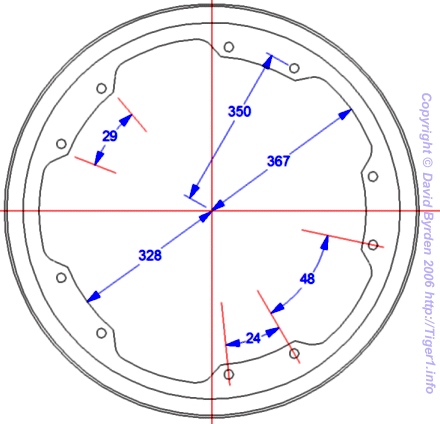
The original "drum" cupola designed for the Tiger was removable. It was bolted into in a base ring that was welded into the turret roof plate. This drawing shows the base ring. The cupola was held by ten bolts; they were inserted through flanges in the base ring from below, to meet threaded holes in the cupola.
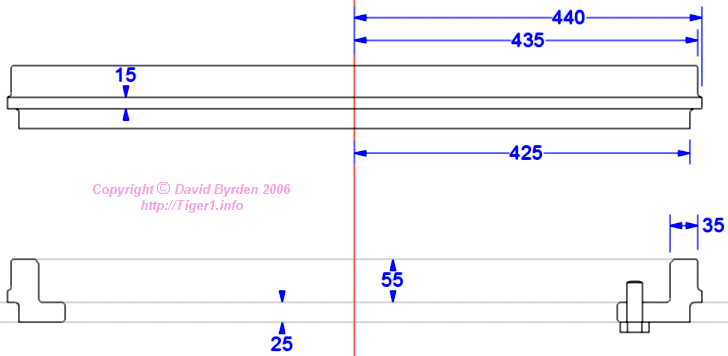
The ring had a maximum diameter of 880mm. The internal flanges were at the level of the roof plate. The hole in the roof was 850mm diameter, and the inside diameter of the ring was 695mm.
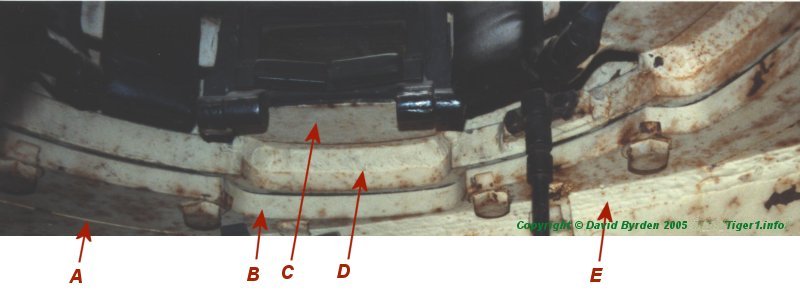
This photo shows the base of the cupola from inside. [A] is the edge of the 850mm hole in the roof plate. The base ring [B] sits in it. The cupola [D] is bolted on top. (This is the original paint of the Bovington Tiger.)
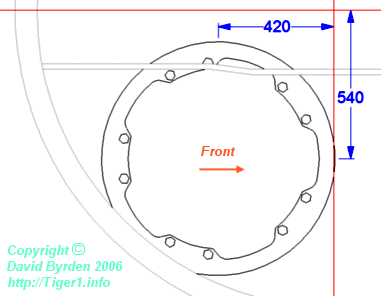
This diagram shows the turret roof from below. There was not adequate room in the circular turret for this large cupola. It was placed as far back as possible, overlapping the armour wall and a roof beam. But even so, it was 50mm to the left of the commander's seat. Note that the roof beam had to be bent slightly to avoid the cupola bolts.
Being held in place by only 10 bolts, the cupola was a weak spot on the Tiger. This was recognised early on, and larger bolts were used thereafter. Later, a design change was introduced with the 200th turret; five more bolts were added.
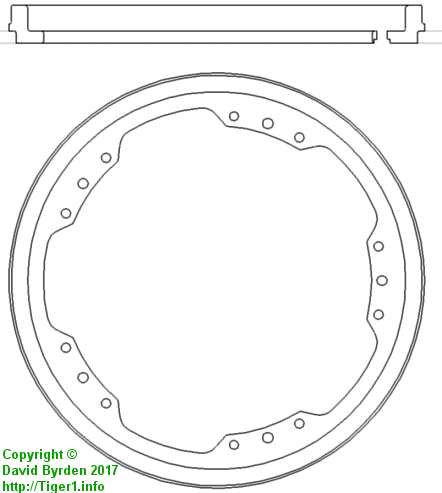
The new bolts were placed between the old ones, as this diagram shows. But they did not use the same design. They were inserted from above to meet nuts in recessed holes on the bottom of the base ring.

The cupola at the Australian Armor Museum has the extra bolt holes, indicated here. You can see the recess in the central one.
The Tiger commander Otto Carius almost lost his head when a Russian AP shell hit his cupola and took it off his tank. He survived only because he ducked down into the vehicle to speak to the crew. Looking at photos of his Tiger, tactical sign "213", we can deduce its build date and we can see that it had the old design with only 10 bolts holding it in place.
[1] Survey of Tiger 250122, at Bovington museum, by David Byrden